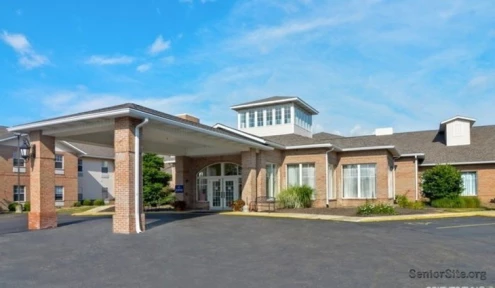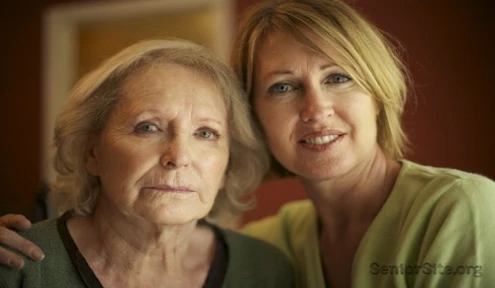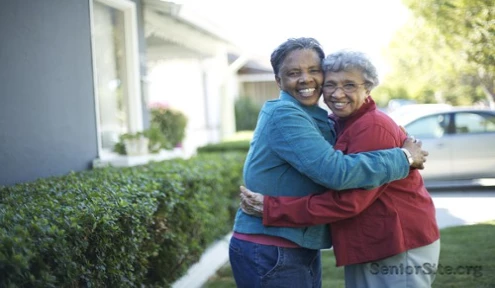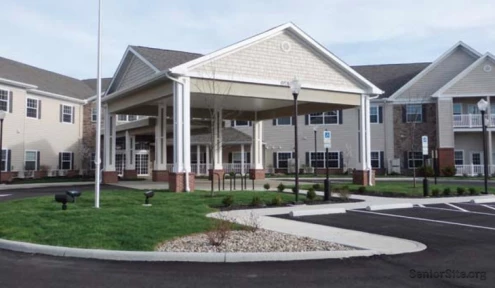Family caregivers in America increased by 9.5 million between 2015 and 2020, highlighting the growing importance of understanding differences between caregivers and caretakers in senior care. While both roles support others, they serve distinct functions in the care system. Caregivers, particularly common across the United States and Canada, provide hands-on care with significant emotional involvement and help with daily activities. Caretakers, however, typically maintain professional distance and focus on specific tasks and property management.
These terms are often used interchangeably, but the distinctions matter for families planning senior care arrangements. Caregivers generally develop meaningful emotional connections with those they assist, while caretakers maintain professional boundaries and concentrate on practical responsibilities. This guide breaks down the key differences between these roles to help families make informed decisions about appropriate support for elderly loved ones.
Understanding the Core Roles: Caregiver vs Caretaker
Caregiving and caretaking duties often overlap, but their approaches to senior care differ fundamentally. Johns Hopkins Medicine notes, “There are only four kinds of people in this world: those who have been caregivers, those who are currently caregivers, those who will be caregivers and those who will need caregivers. Caregiving is universal”.
What is a caregiver? Emotional and physical support explained
Caregivers provide comprehensive support to people unable to fully care for themselves due to illness, disability, or aging. They offer both emotional connections and physical assistance. The National Cancer Institute defines caregivers as “people who provide care to people who need help in taking care of themselves”. Family caregivers form one leg of the “three-legged stool” of healthcare, alongside professional caregivers and the care recipient.
Caregiving duties typically include:
- Personal care (bathing, dressing, grooming)
- Emotional support and companionship
- Medication management
- Transportation and mobility assistance
- Meal preparation and housekeeping
Family caregiving has become “more intensive, complex, and long lasting than in the past”, with caregivers rarely receiving proper preparation for their expanding responsibilities.
What is a caretaker? Task-based and professional responsibilities
Caretakers maintain professional relationships with those under their care, unlike caregivers. Traditionally, a caretaker is “someone paid to look after a person, animal, things, or a place”. They view care as employment rather than an emotional commitment.
Caretakers focus on task completion and professional service delivery. Their duties often include supervising property or individuals, ensuring physical needs are met, and maintaining professional boundaries. Caretakers typically expect payment for their services.
Difference between caregiver and caretaker in elder care
The caretaker vs caregiver distinction becomes particularly important in elder care. Family caregivers provide support “without expecting compensation or money”, while caretakers consider their role as employment deserving payment.
Boundaries and relationships mark another key difference. Caregivers aim to “empower the person they care for, respecting their autonomy, and helping them retain control over their lives”, developing deeper emotional connections as a result. Caretakers maintain clear boundaries and may “feel they’re in control of everything, know what’s best for others, and don’t take other opinions well”.
For families exploring elder care options, understanding these differences helps select support systems that align with both practical needs and emotional preferences.
Emotional Dynamics and Relationship Boundaries
The emotional connection between caregivers and care recipients affects both the quality and sustainability of their relationship. Understanding these emotional aspects helps clarify the caregiver vs caretaker distinction in senior care.
Emotional connection: Compassion vs. obligation
Compassion serves as the foundation of effective elderly care, turning basic assistance into meaningful support. Caregivers typically form deeper emotional bonds based on empathy, unlike caretakers who view their duties through a professional lens. This difference is significant because research shows older adults with emotional support experience lower depression and anxiety levels while maintaining better cognitive function.
Genuine caregiving comes from love and concern rather than obligation. Many family members report that caregiving doesn’t feel burdensome when motivated by authentic compassion. Caretaking without emotional investment creates environments where tasks are completed efficiently but lack the warmth that promotes dignity and belonging.
Codependency risks in long-term caregiving
About 17% of caregivers report experiencing “a lot of strain”, often from codependent relationships. Codependency—a pattern that negatively affects relationships—can develop gradually during long-term caregiving arrangements.
Warning signs of codependency include:
- Denial patterns (“I perceive myself as completely unselfish”)
- Low self-esteem (“I do not ask others to meet my needs”)
- Compliance patterns (“I compromise my own values to avoid rejection”)
- Control patterns (“I believe most others are incapable of taking care of themselves”)
People who are particularly sensitive to guilt feelings are more likely to become codependent in relationships with someone dependent on them. Over time, this dynamic damages the caregiver’s wellbeing and undermines the care recipient’s independence.
How boundaries prevent unhealthy caretaking
Clear boundaries separate healthy caregiving from unhealthy caretaking. Without established limits, caregivers often develop resentment that affects their ability to provide quality care.
Boundaries protect both parties by ensuring caregivers’ needs aren’t completely sacrificed for care recipients. They also prevent caregivers from controlling care recipients’ autonomy. Well-maintained boundaries preserve “compassion reserves” by preventing burnout and sustaining the genuinely supportive nature of the relationship.
Training, Compensation, and Legal Responsibilities
Professional requirements create a significant distinction in the caregiver vs caretaker landscape. Formal training, payment structures, and legal obligations establish clear boundaries between these similar yet distinct roles.
Professional training: Caretaker certifications and duties
Formal caretakers typically obtain professional certification to validate their expertise. The American Caregiver Association, established in 1985, functions as the national certifying body offering several professional credentials. The National Caregiver Certification Course (NCCC) covers essential skills including medication management, vital signs monitoring, and dementia care. Specialized certifications exist for particular conditions and settings, such as Certified Nursing Assistant (CNA) and Home Health Aide (HHA) qualifications.
Most certification programs require:
- High school diploma or equivalent
- Completion of training courses (ranging from one semester to several weeks)
- Passing competency examinations
- Background checks and fingerprint clearance
Informal vs. formal caregiving: Who gets paid and why
Payment structures fundamentally separate informal family caregivers from professional caretakers. Only about 3% of Americans own long-term care insurance policies that might cover caregiving costs. Despite family members providing most elder care (74.5% in recent surveys), they rarely receive compensation for their services.
Formal caretakers receive payment through various channels:
- Direct employment by facilities or agencies
- Long-term care insurance (through cash indemnity models)
- Medicaid programs (for eligible low-income recipients)
- VA benefits (for qualifying veterans and spouses)
Legal accountability: Reporting, documentation, and liability
Both roles carry legal obligations, though professional caretakers face more stringent requirements. Documentation serves as the cornerstone of legal protection—”if it’s not written down, it didn’t happen”. Professional caretakers must maintain detailed records of care provided, medications administered, and condition changes.
Legal liability extends beyond documentation to mandatory reporting of suspected abuse or neglect. Caretaker negligence can result in both civil penalties (compensation for damages) and criminal charges in severe cases. Facilities must implement continuous training programs and clear policies to minimize liability risks.
For family caregivers, understanding legal authority is essential—whether through powers of attorney, healthcare directives, or formal guardianship arrangements. Without proper legal documents, even devoted family caregivers may lack the authority to make critical decisions during emergencies.
Care Settings: Home-Based vs Facility-Based Roles
The physical environment where care occurs shapes the roles, boundaries, and daily responsibilities in the caregiver vs caretaker dynamic. From private homes to specialized facilities, each setting creates distinct caregiving landscapes with different expectations and challenges.
Home care: Family caregivers and independent caretakers
Home-based care lets seniors receive help while maintaining the comfort of familiar surroundings. Most family caregivers volunteer their time without payment to assist loved ones. They primarily help with daily personal tasks and coordinate care plans, often balancing numerous other responsibilities like work and children. Family caregivers might live with their loved one or visit regularly, handling emergency planning and care coordination.
Independent professional caretakers in home settings typically fall into three categories: Certified Nursing Assistants (CNAs), Personal Care Aides, and Home Care Aides. Unlike family members, these professionals expect payment and maintain clearer boundaries between their personal and professional lives.
Facility care: Staff roles in nursing homes and memory care
Facility-based care uses a structured team approach with specialized roles. Nursing homes employ Registered Nurses (RNs), Licensed Practical Nurses (LPNs), and Certified Nursing Assistants (CNAs) who provide direct care. Specialized staff includes Physical Therapists, Occupational Therapists, Speech-Language Pathologists, and Dietitians who address specific aspects of residents’ wellbeing.
Memory care facilities serve seniors with Alzheimer’s disease or dementia, with staff trained as Certified Dementia Care Practitioners (CDPs). These specialists focus on preventing wandering, maintaining routines, managing behavioral symptoms, and ensuring resident safety.
How care settings influence role expectations
The care environment directly affects role boundaries and expectations. Home settings offer more personalized care with one-on-one attention, while facility care involves multiple staff members caring for numerous residents.
Family caregivers remain involved when older adults move into residential facilities, often becoming advocates with facility administration and staff. This transition creates a hybrid model where family members work alongside professional staff while maintaining emotional connections.
Home care provides greater flexibility and customization, while facility care delivers comprehensive medical support and structured social interaction. These different environments fundamentally change how caregiving responsibilities are defined, delegated, and delivered.
Comparison Table
| Aspect | Caregiver | Caretaker |
|---|---|---|
| Primary Role | Provides holistic support to those unable to fully care for themselves | Maintains professional supervision of person, animal, things, or place |
| Emotional Involvement | Deep emotional connection and bonds with care recipients | Maintains professional distance and boundaries |
| Compensation | Typically unpaid (especially family caregivers) | Expects payment for services |
| Training Requirements | Often informal, learning through experience | Professional certifications and formal training required |
| Primary Responsibilities | – Personal care (bathing, dressing, grooming) – Emotional support – Medication management – Transportation – Meal preparation | – Task-based responsibilities – Property supervision – Meeting physical needs – Professional service delivery |
| Relationship Approach | Empowers care recipient and respects their autonomy | Maintains professional boundaries and control over tasks |
| Motivation | Driven by compassion and emotional connection | Driven by professional obligation and duty |
| Documentation Requirements | Less formal documentation needed | Strict documentation and reporting requirements |
| Legal Accountability | Basic legal authority through POA or guardianship | Formal liability and mandatory reporting obligations |
Conclusion
The distinct roles of caregivers and caretakers matter significantly for families arranging senior care. Both positions fulfill important functions in elder care, but their fundamental differences affect the quality and nature of support provided. Caregivers develop meaningful emotional bonds, deliver comprehensive assistance, and typically serve without payment, especially in family settings. Professional caretakers maintain clear boundaries, follow established protocols, and expect compensation for their services.
These differences become crucial when families make decisions about care arrangements. Professional caretakers offer certified expertise and formal training, making them valuable in facility-based environments. Family caregivers, while usually lacking formal certifications, provide irreplaceable emotional support and personalized attention based on deep personal connections.
Successful senior care often integrates elements from both approaches. Professional caretakers supply structured support and medical expertise, while family caregivers sustain emotional connections and advocate for their loved ones. This balanced approach helps seniors maintain dignity and quality of life as they age by receiving both professional care and emotional support.
FAQs
Q1. What are the main differences between a caregiver and a caretaker in senior care? Caregivers provide holistic support, including emotional and physical assistance, often developing deep bonds with care recipients. Caretakers maintain a more professional relationship, focusing on task-based responsibilities and property management. Caregivers are typically unpaid family members, while caretakers expect compensation for their services.
Q2. How do emotional dynamics differ between caregiving and caretaking? Caregiving involves a deeper emotional connection based on compassion and empathy, often stemming from familial relationships. Caretaking maintains professional boundaries and focuses more on task completion. This emotional distinction can significantly impact the quality of care and the well-being of both the care provider and recipient.
Q3. What are the training and certification requirements for professional caregivers and caretakers? Professional caretakers typically require formal certifications, such as the National Caregiver Certification Course or specialized qualifications like Certified Nursing Assistant (CNA). Family caregivers often learn through experience without formal training. Both roles may involve ongoing education, but professional caretakers face stricter requirements for maintaining their credentials.
Q4. How does the care setting influence the roles of caregivers and caretakers? Home-based care often involves more personalized, one-on-one attention from family caregivers or independent professionals. Facility-based care, such as nursing homes or memory care centers, employs a team of specialized staff with defined roles. The care environment directly impacts role expectations, boundaries, and the nature of care provided.
Q5. What legal responsibilities do caregivers and caretakers have? Professional caretakers face stricter legal requirements, including detailed documentation of care provided and mandatory reporting of suspected abuse or neglect. They may also be held liable for negligence. Family caregivers should understand their legal authority through powers of attorney or guardianship arrangements to make critical decisions when necessary.












